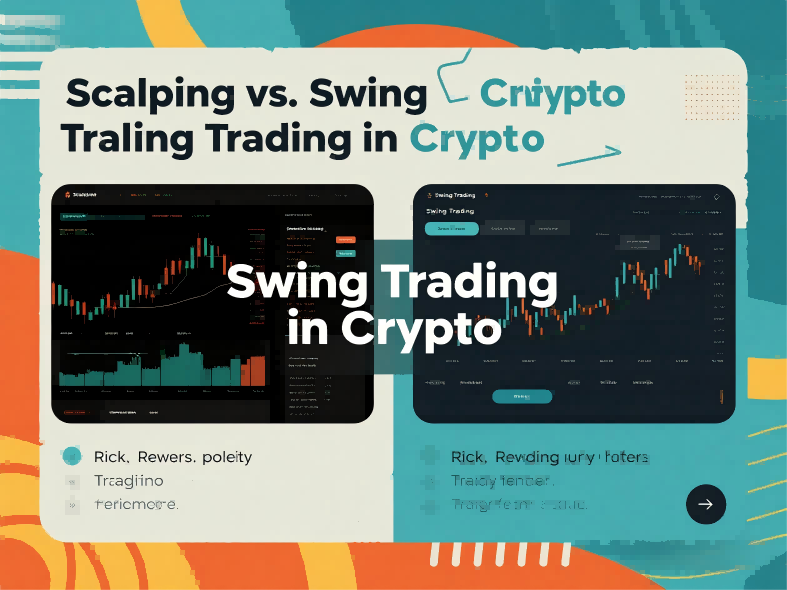In crypto trading, timing is everything. Whether you're a fast-paced scalper catching micro price moves or a strategic swing trader riding broader trends, the way you trade defines your experience—and your risk. As crypto markets continue to evolve, more traders are asking: Which style actually works better for me? If you’re stuck between high-speed scalping and trend-based swing trading, this guide will break it down in plain terms—no fluff, no hype.

At the end of the day, both scalping and swing trading are about the same thing: making money from market movement. The difference lies in how and how often you enter and exit trades.
Scalping is like sprinting—rapid, intense, and over in a flash. Think 30-second to 5-minute trades, executed multiple times a day. It’s about catching tiny price changes and compounding them. Swing trading, on the other hand, is more like distance running. You’re looking for bigger moves that may unfold over days or even weeks. It’s about spotting momentum and letting the trade breathe.
Scalping in crypto is all about speed and precision. Traders open and close positions within minutes—sometimes seconds—to capture small gains that add up. It requires laser focus, fast execution, and usually, a platform with ultra-low fees and tight spreads.
Scalpers often use leverage to magnify those small movements. For example, a 0.5% move in Bitcoin might not sound exciting—unless you’re trading with 20x leverage. However, it’s not for the faint of heart. Market noise, high volatility, and fees can eat into profits quickly if you're not careful.
Best for: Full-time traders, data-driven minds, and those who thrive in fast-paced environments.
Tools you'll need: Advanced charting software, low-latency execution, real-time news feeds.
Swing trading is a slower-paced strategy that focuses on catching medium-term trends. You might buy Ethereum on a dip and hold it for a few days or weeks, expecting a 10–20% move. It’s more forgiving than scalping when it comes to timing and allows for more thoughtful analysis.
Many swing traders use technical indicators like RSI, MACD, or trendlines, combined with market sentiment or macro news. It’s about playing the rhythm of the market instead of its every heartbeat.
Best for: Busy professionals, part-time traders, and those with a macro view.
Tools you'll need: Trend indicators, basic TA tools, and patience.
There’s no “one-size-fits-all” answer—because it depends on your lifestyle, risk tolerance, and trading experience.
Think of scalping as a high-intensity workout—you get quick results but burn out fast if not managed properly. Swing trading is like steady cardio—it may take longer, but it’s more sustainable for most people.
"I started with scalping, but I couldn’t keep up during the day. Once I switched to swing trading, I felt more in control—and surprisingly, my profits grew more consistently," says Luis P., a part-time trader from Austin.
Others, like Jenna R., a full-time DeFi analyst, swear by scalping: "I love the adrenaline. Fast in, fast out. No overnight risk. Just pure focus."
Both strategies can work—but not for everyone. If you enjoy watching charts move and acting quickly, scalping might be your game. If you prefer zooming out, thinking strategically, and letting trades play out, swing trading offers that pace.
Whatever you choose, make sure you’re backed by a reliable platform. Look for features like low spreads, high-speed execution, built-in analytics, and risk management tools like stop-loss and liquidation protection. And if you're exploring leverage? Go with platforms that offer flexible options and clear risk parameters.
Trade smart. Trade your way. Whether you're scalping seconds or swinging days, crypto gives you the tools—you just have to choose how to use them.
Spot trading is straightforward: you buy an asset like Bitcoin, Tesla stock, or gold, and you profit if the price goes up
Read MoreTrading has always carried an air of possibility. The idea of turning a well-timed decision into a life-changing profit a
Read MoreStart your CFD trading
Your All in One Trading APP PFD